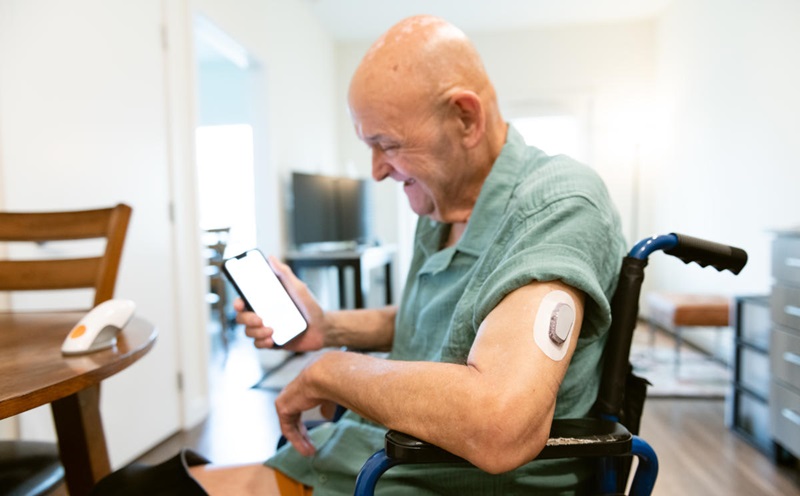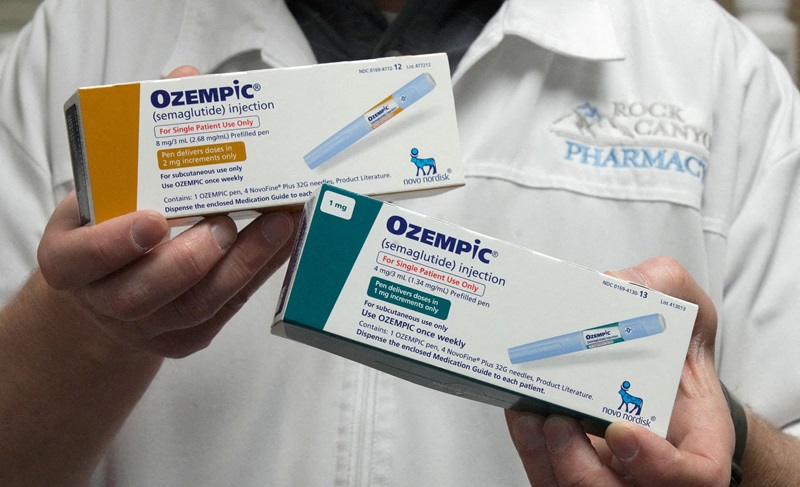DexCom Stock Drops Sharply: Are Eli Lilly and Novo Nordisk to Blame?
DexCom, the leading manufacturer of continuous glucose monitoring systems for diabetes management, has recently experienced a sharp decline in its stock prices. This sudden drop has investors and market analysts pointing fingers at pharmaceutical giants, Eli Lilly and Novo Nordisk, as the potential culprits behind this financial tumble. Both companies are known for their pioneering work in diabetes care and have recently launched rival products that may pose significant threats to DexCom. Eli Lilly’s new connected insulin pen and Novo Nordisk’s smart insulin pen, both of which can digitally track insulin data, provide similar functionality to DexCom’s continuous glucose monitoring system, but with added convenience. This has led to speculation that these new products could be drawing market share away from DexCom, resulting in the plunge in its stock value.
Furthermore, these two pharmaceutical giants are not only challenging DexCom with their innovative products but also with their aggressive marketing strategies. They have been putting substantial efforts into promoting their smart insulin pens, further intensifying the competition in the diabetes care market. This has raised concerns over whether DexCom can maintain its leading position in the face of such formidable rivals.
Moreover, Eli Lilly and Novo Nordisk have an established presence in the diabetes care market, with a wide range of products in their portfolio. This allows them to offer comprehensive diabetes care solutions, making them attractive to healthcare providers and patients. On the other hand, DexCom specializes only in glucose monitoring systems. This lack of product diversification may put DexCom at a disadvantage, as it may not be able to offer as complete a solution as its competitors.
While DexCom has been a dominant player in the glucose monitoring market, the introduction of these smart insulin pens by Eli Lilly and Novo Nordisk could disrupt this status quo. With their ability to digitally track insulin data, these pens offer a more integrated approach to diabetes management. Patients can now have access to real-time data about their insulin levels, allowing for better control and management of their condition. This development may have a significant impact on the way diabetes is managed, thus affecting the demand for DexCom’s products.
Investors and market analysts are closely watching these market dynamics, as the rivalry between DexCom, Eli Lilly, and Novo Nordisk unfolds. The sharp drop in DexCom’s stock prices may be indicative of changing market trends and the shifting preferences of healthcare providers and patients. With the evolution of technology and the introduction of innovative products, the competition in the diabetes care market is expected to become even more intense. Whether DexCom can withstand this pressure and maintain its market share remains to be seen.
In conclusion, while it is difficult to definitively attribute DexCom’s stock decline to Eli Lilly and Novo Nordisk’s actions, the correlation between the introduction of their smart insulin pens and DexCom’s stock price drop cannot be ignored. The current market dynamics highlight the challenges DexCom may face in the future and underscore the importance of innovation and adaptation in the fiercely competitive diabetes care market.

Understanding Eli Lilly and Novo Nordisk’s Role
Eli Lilly and Novo Nordisk are two globally recognized pharmaceutical companies, both renowned for their significant roles in the healthcare sector. Eli Lilly, headquartered in Indiana, USA, has made remarkable contributions to the development of insulin and antidepressants, while Novo Nordisk, a Danish multinational, is a global leader in diabetes care. The two organizations are committed to improving the lives of individuals suffering from chronic conditions through the development of innovative medicines and delivery systems.
Eli Lilly’s role extends beyond the manufacture of pharmaceutical products. The company is also deeply involved in clinical research, striving to identify new treatment methods and improve existing ones. Their research spans various health issues, including diabetes, cancer, immunology, and neuroscience. Lilly has been instrumental in the development of several groundbreaking therapies, including the first commercially available insulin and antidepressant, revolutionizing the way these conditions are managed.
On the other hand, Novo Nordisk’s role is primarily centered on diabetes care, with the company focusing heavily on research and development in this area. Novo Nordisk’s commitment to diabetes care is demonstrated by its extensive product portfolio, which includes some of the world’s most widely used insulin products. The company is also at the forefront of stem cell research for diabetes, with the aim of finding a cure for the disease.
Both Eli Lilly and Novo Nordisk play a crucial role in the global healthcare landscape, with their contributions going far beyond the creation of life-saving drugs. They are also active in various community initiatives and patient support programs, demonstrating their commitment to improving patient lives. Their roles in healthcare, research and development, and community engagement have made them indispensable players in the industry, contributing significantly to advancements in medical science and patient care.
Impact of Lilly’s and Novo Nordisk’s Drugs on DexCom
As leading manufacturers of insulin and other diabetes-related products, Lilly and Novo Nordisk have had a significant influence on DexCom, a company known for its continuous glucose monitoring (CGM) systems. The products of Lilly and Novo Nordisk, which primarily focus on insulin therapies, have shifted the diabetes management landscape, thus affecting DexCom’s market position. For instance, the introduction of innovative insulin delivery systems by Lilly and Novo Nordisk has offered users a more convenient and less invasive way of managing diabetes, potentially encroaching on the market share of DexCom’s CGMs.
Furthermore, Lilly and Novo Nordisk have also delved into the development of their own CGM systems. This expansion of their product portfolio has posed direct competition to DexCom. The reputation and established market presence of these two companies could sway potential customers, challenging DexCom’s growth and profitability.
It is also important to note the impact of the affordability of Lilly’s and Novo Nordisk’s drugs on DexCom. These companies have been able to provide cost-effective solutions for diabetes management, which could be an attractive offer for many patients considering the high cost of managing this chronic condition. These pricing strategies could potentially impact DexCom’s ability to attract and retain customers who are price-sensitive.
However, the competition also drives innovation. DexCom has been pushed to continually improve its products, enhance its technology, and find ways to differentiate itself. This has resulted in the development of advanced CGM systems that offer real-time glucose readings and trend data, enabling patients to manage their diabetes more effectively.
In conclusion, the influence of Lilly’s and Novo Nordisk’s drugs on DexCom has been multifaceted, affecting not only the competition landscape but also the pace of innovation within the diabetes management industry. While challenges are present, opportunities for improvement and development are also created, fostering an environment conducive for the betterment of diabetes care.

A Growing Challenge for DexCom’s Market Position
DexCom, a leading provider of continuous glucose monitoring systems for diabetes management, is facing escalating competition that could potentially threaten its market position. The company has enjoyed a significant amount of success and growth due to its innovative technology and patient-friendly devices. However, new entrants and existing competitors have started to develop and launch innovative products similar to DexCom’s, and this has begun to pose a serious challenge to the company’s dominance.
For instance, companies like Abbott Laboratories and Medtronic have developed advanced glucose monitoring systems that provide similar features to those of DexCom, but at a more competitive price. Additionally, technology giants such as Google and Apple have also shown interest in the diabetes management market, further intensifying the competition. These companies have abundant resources to invest in research and development, and their strong brand recognition could potentially attract DexCom’s existing customer base.
As a result, DexCom must continue to innovate and improve its products to maintain its market position. The company may also need to consider strategic partnerships or acquisitions to strengthen its competitive edge. Despite these challenges, DexCom has the potential to thrive due to its strong technological capabilities and its focus on patient-centric solutions. However, it must navigate this increasingly competitive landscape carefully to ensure its continued success.

Is Now the Right Time to Invest $1,000 in DexCom?
Investing in DexCom, a company that specializes in continuous glucose monitoring systems, is a decision that demands careful consideration. Currently, the company is experiencing solid growth, primarily driven by the increasing prevalence of diabetes globally and the need for more efficient glucose monitoring systems. Despite the impact of the global pandemic, DexCom has managed to further strengthen its market presence and has shown impressive resilience.
However, it’s essential to take into account the current state of the stock market and the price of DexCom shares. As of now, DexCom’s share price is relatively high. This could indicate that it’s overvalued, pointing towards the possibility of a future correction. Investors should also be aware of the inherent risks associated with investing in the healthcare sector. Regulatory changes, insurance coverage issues, and the rapid pace of technological advancements are among the key factors that could impact the company’s future performance.
Given these factors, whether now is the right time to invest $1,000 in DexCom depends largely on an individual investor’s risk appetite, investment horizon, and financial goals. Those with a long-term perspective might see the current price as a worthy entry point, banking on the company’s robust growth prospects and strong market position. Conversely, more conservative investors may prefer to wait for a potential price correction before committing their funds.
To make an informed decision, it’s advisable to conduct thorough research and possibly consult with a financial advisor. An evaluation of DexCom’s financial health, its competitive position, and the overall market trends will provide more insight into the potential risks and rewards of investing in this company at this point in time. Ultimately, investing in DexCom, like any investment, should align with an investor’s broader financial strategy and objectives.
